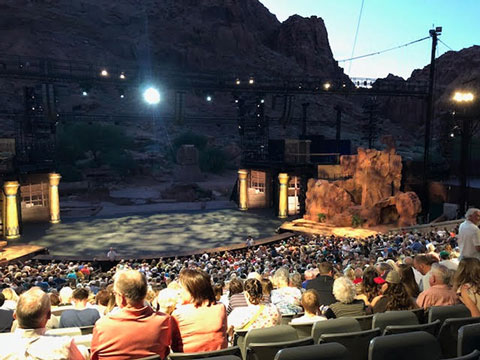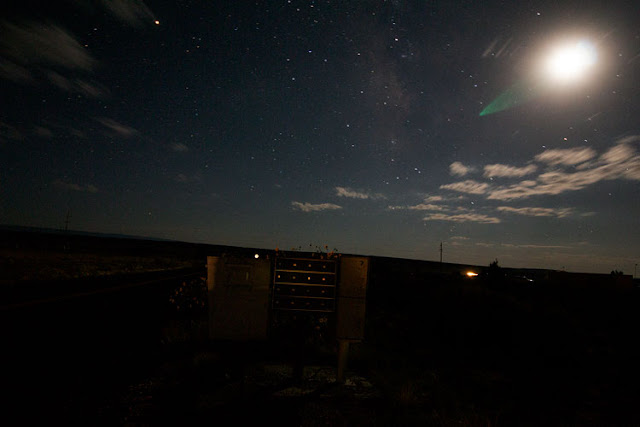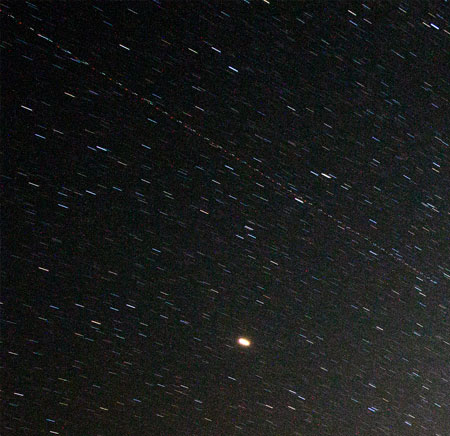Well it seems that no sooner had we unpacked our bags from our middle east cruise we had to repack to begin our journey to the dark skies of southern Utah for my 50th reunion of our high school graduation. Also we can report on some success at getting some real Milky Way images and sights.
But first, let me add one more item to the calendar of upcoming events that I should have mentioned last time with respect to the NASA Mars Sample Return 2020 program. It turns out when we discussed how the mission was only capable of returning just 31 small lightweight samples from Mars, what was not discussed was where the rover was going to land on Mars. There is currently only one mission planned to go and it will land at only one site. Will the selected site be Columbia Hills, Jezero Crater or NE Syrtis?
Well there is an upcoming NASA workshop on October 16-18, in Glendale, CA, where the three proposed landing sites will be down selected to just the one real landing site. That should be a pretty neat discussion. I plan to be there and have signed up for it, but I do worry and hope that I don't fill up one of the available seats that some real scientist would have like to be able to have had.
How will the tradeoffs between what can be learned at each site be traded off against each site? It should be very educational to see how what is expected to be learned from just 31 samples and how the different types of findings from each of the three potential landing sites will play out and how to optimize and down select to just one site and its 31 samples.
On our way, Resident Astronomer Peggy and I had a chance to spend a few days with Big Sister, Ilene, and Friend Jack. It was nice to see everyone and catch up on what has been going on. One of the treats that we really enjoyed was to visit the Tuacahn Amphitheater and see a spectacular production of the musical, The Prince of Egypt. This staging in the outdoor, 1920 seat amphitheater, was simply fantastic, with real camels and donkeys on stage, with laser show lighting and fireworks. The story centered around the imagined personal relationship between Moses and Ramses, the Pharaoh of Egypt. The final scenes of Ramses pursuing Moses across the parted Red Sea was staged so that real water, seemingly a half a foot deep, streamed across the stage and swept and rolled Ramses' army into what was essentially the orchestra pit and out of our eyesight. It, and the music and singing and the rest of the show was just very enjoyable and well done. Thanks, for inviting us to that and all of the rest of your hospitality and much more, Ilene and Jack!
 |
| Waiting in the Tuacahn Amphitheater for the start of "The Prince of Egypt" |
Ok, so it was onward to the 50th high school class reunion and one more time to drive on two lane roads through the red hills and valleys. I have to say I found it all very enjoyable, but at the time of my high school graduation, I wanted nothing more to do with these hills and was looking forward to the sights and sounds of the big city.
 |
| Driving on two-lane roads in southern Utah (Source: Palmia Observatory) |
The reunion and gettogether dinner and breakfast were really enjoyable and it gave us all a chance to reminisce and catch up with old friends and start new friendships. So how many of you have been lucky enough to grow up in a small community where you pretty much knew everyone in town and school? Resident Astronomer Peggy is a Navy brat and went to twelve different schools in twelve years and didn't have any kind of deep connection to her early classmates. I know for me, event though I graduated and moved away to the big city, I still appreciate and remember fondly my early times growing up there. I was too nerdy to have a real girlfriend then, but it was great reminiscing and finding out how we all turned out. It was quite a psychological journey going over how and why we learned to be who we turned out to be and how everything could have turned out so differently. We impact those around us and are in turn impacted by everyone. Thanks to everyone who made this reunion a great success and it was so great to see old and new friends!
Nonetheless, it was good to see those still remaining, especially the rowdy bunch of five, nerdy, motorcyclists, at the time affectionately dubbed the "Devils Angels". I was part of this crowd and here we are again, 50 years later. We always would show up at school on a Honda or two and a Scat and of course some Harley Davidsons. Some of our exploits and activities were considered by many of our neighbors as downright unneighborly and more significantly quite illegal. If we did some of those same things today, we definitely would have our photos posted in every post office across the country. No names are provided, to protect the innocent and the guilty, and just in case some of our exploits were such that even 50 years is not long enough to extend beyond the statute of limitations!
 |
| The "Devil's Angels", 50 years on now (Source: Palmia Observatory) |
Well another good reason to spend time in southern Utah, besides all the national parks, is to enjoy the dark skies. My astronomical goal for the time there was to first of all just experience the seeing of the Milky Way with your bare eyeballs and then capture some more images too.
My first attempt, with just my DSLR 10mm lens and camera tripod, was at 9:13 PM, well into astronomical twilight. But when I identified Saturn in the night sky, which is my beacon for locating the Milky Way, that darn old Moon was high in the sky and pretty close by. Check out the 53 second exposure below.
You can barely see some hints of the Milky Way, but the moon and thin clouds are just reflecting and scattering too much light. A bright green lens flare shows up almost like a comet. So, this was just not going to work. Luckily, my Sky Safari Pro app showed that around midnight, the moon would have dropped below the horizon and I might have another chance of seeing the Milky Way.
 |
| Milky Way starts to show up, but the moon is too bright (Source: Palmia Observatory) |
Ok, so it was back to the hotel where I told a disappointed Resident Astronomer, Peggy, that we were going to have to go back out again at about midnight. She told me that she was not going out and then I would have to go out by myself. Ok, so about 3 hours later, I drive about 3-4 miles away from the hotel and try my luck again. This time, 11:40 PM, the moon is below the horizon, and wow, yes, you can see a very bright Milky Way with just your own eyeballs. We just cannot see this in most areas of southern California any more. Very impressive!
Check out this 120 second exposure taken with the camera pointing almost directly overhead. You can see some star tracking and trails because this long exposure was taken on a non-tracking camera tripod. The image sort of captures what the view was like but it not the same thing at all as seeing it with your own naked eyeballs.
 |
| High overhead, 120 second exposure, 10mm lens, of Milky Way (Source: Palmia Observatory) |
The next 120 second exposure taken right down near the horizon is more impressive.
 |
| Milky Way, as seen in this 10mm DSLR lens, 120 second exposure (Source: Palmia Observatory) |
Hooray, now that is starting to look pretty good! Without a tracking mount, the images are going to be a bit blurred due to the long exposure, even with the very wide 10mm lens. You really need a tracking mount for these long exposures and/or maybe even higher ISO setting. Now, I had packed up my little SkyWatcher tracking tripod for cameras, which is much lighter than my regular telescope tracking mount, and had planned to set it up too, but with the 3 hour delay due to the moon, I was pretty much tired out and wasn't up to going much further because I was starting to fall asleep!
Check out the expanded view of the image above and you can more easily see how the individual stars show up in the long exposure. Hmm, even looks like an airplane was moving through that field of view too. In our next posting, I will report on other Milky Way imaging. to be done with a tracking mount, when we are on our three Arizona observatory tours adventure.
 |
| Enlarged section of Milky Way photo shows effect of non-tracking mount and aircraft (Source: Palmia Observatory) |
Ok, one final note with three lessons learned from this attempt at photographing the Milky Way:
(1) Make sure the moon is not going to get in the way
(2) Keep your tracking mount available for these long exposures
(3) Even when you have your tracking mount, make sure to start early enough to stay awake.
Until next time,
Resident Astronomer George
If you are interested in things astronomical or in astrophysics and cosmology
Check out this blog at www.palmiaobservatory.com

No comments:
Post a Comment